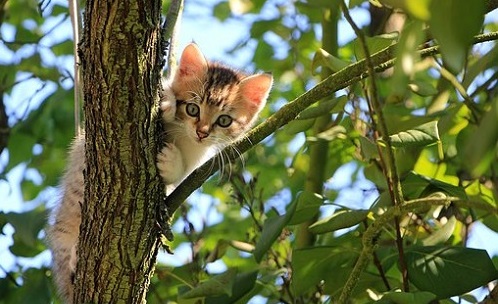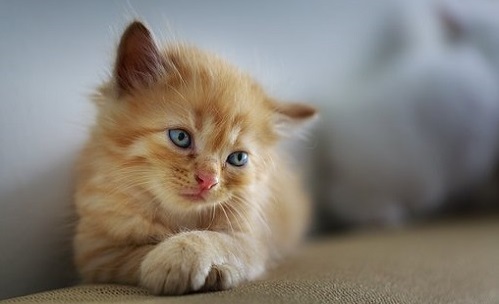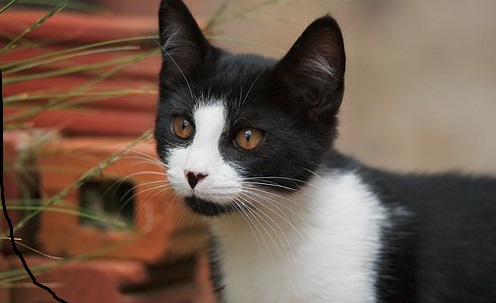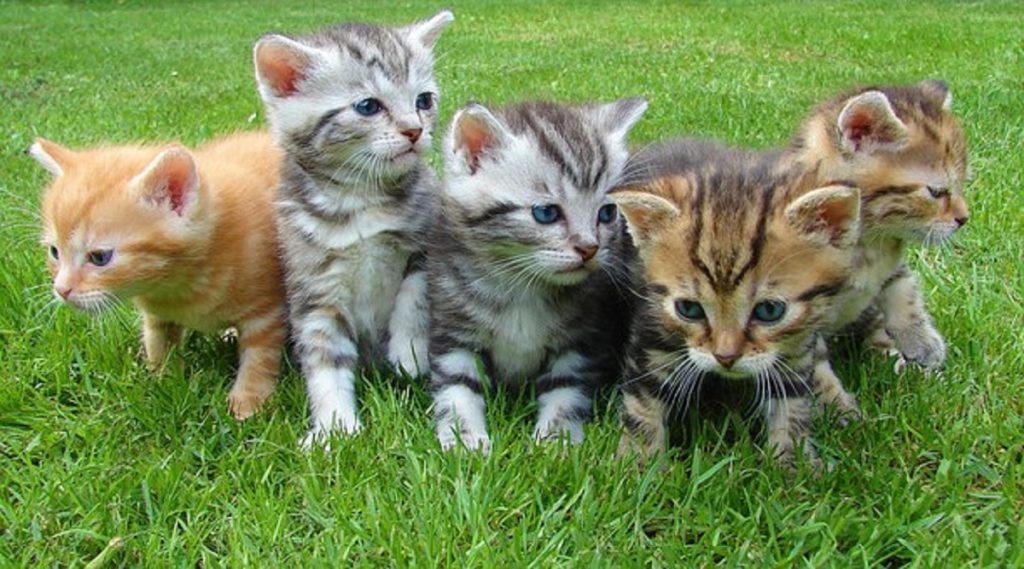Few things are cuter than a kitten. When it comes to loving your new kitten, chances are you’re already an expert. But what about caring for them and providing them with optimal health? Caring for a kitten can be a complicated task. When it comes to health, few things are more important than ensuring that your kitty is well-fed. In this helpful guide, we will outline some of the basics of understanding your new furry friend’s dietary needs and how to meet them.
Kitten Nutritional Needs
In order to know what to feed a kitten, you must develop an understanding of the basic nutritional needs of your kitty. Over the first few weeks of his life, your kitty can triple in weight. This, coupled with high activity levels (you know what we’re referring to), means that your kitten can have up to triple the energy intake needs of a full-grown cat. Because your kitty has a limited stomach size, it is difficult for his body to attain the energy he needs from just one or two meals a day. For this reason, it is highly recommended by veterinarians that kittens eat at least three – and more ideally four – meals a day.
While a kitten’s requirements for fat, vitamin, and fatty acid intake are about the same as an adult cat’s, their need for protein, minerals, vitamins, and amino acids are much, much higher. It is because of these special needs that veterinarians always recommend feeding your new kitty a specially formulated kitten food, rather than regular cat food. Kitten foods will contain the higher protein content, in addition to essential vitamins and minerals that are key to keeping your kitty happy, healthy, and growing well.
Choosing the Best Kitten Food
When you go to the store to pick up food for your new kitten, you will likely be overwhelmed by the options available. There are wet foods, dry foods, organic foods, all-natural foods, meat-based foods, fish-based foods, etc. The list is nearly never-ending. For starters, it is good to remember the basic rule: You get what you pay for. Most veterinarians will recommend a high-quality kitten food, and yes, it will come at a premium price. Choosing a more expensive food to feed your kitten during his vital developmental months can prevent costly health problems from developing further down the road, however.
Check The Label
 If you haven’t received a specific recommendation from your veterinarian, and even if you have, be sure to look for the following on the label: “Meets the nutritional requirements of kittens established by the American Association of Feed Control Officials (AAFCO).” The AAFCO is a state and federal group that regulates pet food. Foods with this label have been certified by the AAFCO to meet the basic nutritional requirements of kittens. Another label you may see will read “Complete and balanced nutrition for kittens based on AAFCO feeding trials.” This label indicates a food that is of even higher quality, and you will probably see that reflected in the price. Foods with this label have been tested by the AAFCO with good results for kitten health.
If you haven’t received a specific recommendation from your veterinarian, and even if you have, be sure to look for the following on the label: “Meets the nutritional requirements of kittens established by the American Association of Feed Control Officials (AAFCO).” The AAFCO is a state and federal group that regulates pet food. Foods with this label have been certified by the AAFCO to meet the basic nutritional requirements of kittens. Another label you may see will read “Complete and balanced nutrition for kittens based on AAFCO feeding trials.” This label indicates a food that is of even higher quality, and you will probably see that reflected in the price. Foods with this label have been tested by the AAFCO with good results for kitten health.
It’s All In The Ingredients
In addition to the AAFCO labels, one of the primary things to look for when choosing a kitten food, wet or dry, is the ingredients. We all know the saying “you are what you eat”, and the same certainly goes for your new feline friend. Take a standard bargain-brand kitten food, for example. In addition to not having the AAFCO “complete and balanced” label, this food has far inferior ingredients for proving a kitten with optimum nutrition. The first five ingredients in a food like this might look something like: “Chicken By-Product Meal, Brewer’s Rice, Corn Gluten Meal, Ground Yellow Corn, Soybean Meal.” A more expensive, ‘premium’ food’s first five ingredients would look more like this: “Deboned Chicken, Chicken Meal, Brown Rice, Barley, Oatmeal.”
We need to look no further than the very first ingredient in these two kibbles to understand why it is worth it to buy a more expensive kitten food. While “deboned chicken” is simply chicken meat, similar to what we would eat; “chicken by-product meal” can contain bones, offal, and underdeveloped eggs. As you can imagine, the nutritional value of deboned chicken is vastly greater than that of chicken by-product meal. Looking at the next few ingredients, we can see that the bargain brand contains grains like “brewer’s rice” and “corn gluten meal”; while the more expensive brand has simple, whole grains like brown rice and barley.
Again, there is a vast difference in nutritional value between these ingredients. In fact, brewer’s rice and corn gluten meal are both by-products of processed grains and they both lack essential nutrients and enzymes required to break down the grain. These are not ingredients that you would feed a child, and they should not be fed to a kitten, either.
Wet or Dry?
Kittens need a diet consisting of some, if not all, canned (wet) food. As you’ve probably noticed, your young kitten has underdeveloped, tiny teeth; and he can’t chew dry food very well. Mixing wet food in with the kibble can help. You can also try saturating his kibble in water before feeding it to him. Perhaps the best option is to only feed your kitty canned food while his teeth are young and underdeveloped, although this will be the most expensive choice. Some vets say that feeding dry food along with wet can allow you to reduce from three or four meals a day to two or three, because the dry food takes longer to break down.
Feeding Methods
 Now that we have established a solid understanding of what to feed a kitten, we will discuss optimum feeding schedules and methods. Many veterinarians today recommend “free feeding”, which means giving your kitten access to unlimited food, at all times. Kittens know by instinct how to avoid overeating, and allowing them free range to food can actually help to prevent them from developing the bad habit of eating too rapidly – which can lead to stomach distention.
Now that we have established a solid understanding of what to feed a kitten, we will discuss optimum feeding schedules and methods. Many veterinarians today recommend “free feeding”, which means giving your kitten access to unlimited food, at all times. Kittens know by instinct how to avoid overeating, and allowing them free range to food can actually help to prevent them from developing the bad habit of eating too rapidly – which can lead to stomach distention.
Furthermore, free-feeding is especially beneficial if you’ve adopted a kitten that is underweight or slow-growing. On the other hand, avoid free-feeding if your kitty happens to be overweight. Even with the increased energy requirements of kittens, feline obesity can be an issue; and some cats are more prone simply due to genetics. Interestingly, spaying and neutering can increase the risk for obesity, so it is especially important to limit food intake around this time.
If free-feeding doesn’t seem to be working for your kitty, try switching to four meals a day. This will ensure he is eating regularly enough to support his quick metabolism, but also encourages him to be enthusiastic about his food and limits his intake if obesity is a concern. While we would all like to be available to feed our kittens at four evenly-dispersed times throughout the day, this is not always a reality. If this is the case, you can try switching to three meals a day. Keep in mind however that this is best for kittens older than 8 weeks and that some dry food in the diet will help in this scenario.
Switching Foods
Sometimes, despite doing your research and buying a premium quality kitty food, the food just doesn’t work out. Maybe your kitten simply doesn’t like what you’ve bought for him, or maybe you are noticing less than ideal weight or energy levels. Whatever the reason is for the switch, there is a correct way to change your kitten’s food.
Veterinarians recommend phasing out the old food by offering steadily decreasing amounts of it in a separate bowl alongside the new food. Making a rapid change in your kitty’s diet can cause issues with his digestive system, or, in the case that he liked his old food, could even lead to a kitten “hunger strike”. We all know how picky and stubborn cats can be, so the method of phasing will help to reduce the risk of issues.
What Not To Feed A Kitten
It’s not only important to give your kitty an optimal diet – you must also know what foods to avoid if you are to have a healthy, happy feline friend. For starters, avoid feeding too many treats. Veterinarians recommend following the “10% calorie rule” which simply states that treats should make up less than 10% of your kitten’s total intake of calories. In addition to this rule, you should take special precautions when dealing with the following ingredients:
First, raw eggs can contain salmonella, a harmful bacteria that humans are familiar with because it can make us very ill. The same goes for kittens. Additionally, raw eggs can decrease your kitty’s ability to absorb vitamin B, leading to issues with his coat and skin.
Next on the no-go list of foods for your new kitten is raw fish. We all know that cats love fish, but when fed to them raw, it can lead to an array of issues including loss of appetite, vitamin B deficiency, kitten seizures, and possibly even death.
Milk, another classic kitty favorite, is also recommended against by vets. It can cause diarrhea in kittens that have been weaned because they no longer have the enzyme required to break down milk in their stomach.
Finally, be sure to be very careful if feeding raw meat or liver, as these can contain harmful bacteria and parasites.
Additional Tips
Use these final tips to really establish yourself as an excellent provider of health for your new kitten.
Location, Location, Location

Make sure to have a set place where your kitty dines. This area should be easily cleanable and should be located in a quiet area of your home, away from the noise and distraction of the rest of the household. If you have multiple cats, keep their bowls separate to avoid scuffles. Remember to do this in particular if you are feeding a kitten and an older cat at the same time, as older cats have a tendency to bully kittens and take their food.
Make It A Ritual
Kittens do best when they are fed at the same time, daily. Make an effort to establish a routine when it comes to feeding your kitty.
Food Storage
Just like with human food, kitten food needs to be properly stored to maintain freshness and sanitation. Keep unfinished cans of wet food covered, in the fridge. However, make an effort to bring the food to room temperature before feeding to make it more appealing and digestible for your kitty. Dry food should be kept in an airtight container to preserve freshness and keep pests out.
Rest Is Key
After feeding, make a nice place for your kitten to rest and digest his food before playing with him or allowing him to engage in rigorous activity. By following these helpful tips, you will be able to provide your kitten a nutritious and healthy diet. If you have any further questions regarding meal time for your kitty, consult with a professional veterinarian.




